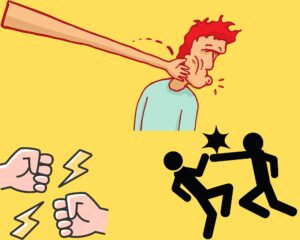Summary:
Darius Sam is a 19-year-old Indigenous man who lost a son to addiction. He decided to run 100 miles all at once to promote awareness of addiction and mental health. Sam prepared for his first 100-mile run in just twenty-eight days and passed out before the 90-mile mark. “The Runner” is a tale of both physical success and the tenacity of the human spirit. The movie was filmed in the Nicola Valley, in Nlaka’pamux and Syilx territory. Sam gets a prayer from an elder before starting his second hundred-mile run.
Early in 2020, Darius Sam, a 19-year-old Indigenous man from British Columbia, lost a family member to addiction. That relative left a son behind. Sam recently told me, “I was looking at him, and I was thinking, ‘This guy’s going to have no good masculine influence in his life.’ Maybe I should go and do something good,'” he thought, hoping that he might inspire others as well.” “Sam jumped into a run.” He discovered a release and “just continued running,” he says, never having done it before. He eventually decided to run 100 miles all at once to promote awareness of addiction and mental health. The documentary “The Runner” by Vancouver-based director Amar Chebib details Sam’s achievements and change.
Sam prepared for his first 100-mile run in just twenty-eight days, a fraction of the training many athletes would need, and he passed out before the 90-mile mark. He chose to give it another go. Chebib informed me that after reading about the initial attempt, he called Sam “within half an hour.” The director was at first hesitant to accept the assignment. Sam is a member of the British Columbian Nlaka’pamux First Nations, and Chebib, who is not Indigenous, isn’t sure if he should be the one to record Sam’s adventure and his motivations for going on it. However, he felt forced to speak with Sam after Chebib did so. He said, “I knew he was a special person.” Since it was remarkable, I wanted to participate and record what he would do.
Sam has lost several friends to addiction. He was born with foetal alcohol syndrome, and after his birth mother abandoned him at the age of eight months, he was raised in an adopted family. He claims in the movie that he experienced depression as a teen and frequently felt lost. He changed after he ran. In one picture, he sprints by a pasture of horses before dawn while a gentle musical hum increases and the camera pans over his feet and gloved hands. Over time, he recalls, “I started to build confidence through discipline.” As Sam works out in a gym, his lips are pursed. He works out at night. In the sky, he howls.
The movie was filmed in the Nicola Valley, in Nlaka’pamux and Syilx territory. The location and the wintertime give the film a chilly, lonely feel. The snow-covered valley is shown in expansive drone imagery, and we follow Sam as he soars overhead while pounding the frozen woodland pathways. But Chebib takes pains to capture lovely moments. Sam’s face is bathed in light in one scene when he confides in his coach about his issues with trust. Sam gets a prayer from an elder before starting his second hundred-mile run on the shores of Nicola Lake. We make a summons to the many, many, many generations of runners who have delivered messages to the valley. “Direct him, protect him, and guide him.” Resolved, he looks up towards the rising sun.
“The Runner” is a tale of both physical success and the tenacity of the human spirit. Sam gives his grandfather some advice on a ranch early in the movie, saying, “You can nearly callus your mind the same way you callus your hands.” His grandfather responds, “I believe that’s a terrific idea.” Sam’s body starts to fail at around mile 50. To the camera, his instructor says, “He’s hurting.” The faces of Sam’s loved ones, however, suddenly flash across the screen as his doubts grow. He reminds himself of his motivation for running and toughens up. His body continues to move and carry him.
Analysis by: Advocacy Unified Network

